Don't wanna be here? Send us removal request.
Text
Period of Post Edsa 1 Revolution
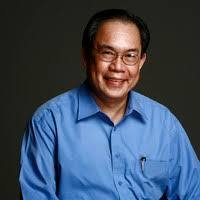
Photo Credit: https://up-diliman.academia.edu/JoseDalisay/CurriculumVitae
Jose Dalisay Jr., usually referred to as Butch Dalisay, is a professor, writer, and journalist from the Philippines. His short tales, essays, and novels are best recognized for frequently addressing identity, politics, and historical topics. "Killing Time in a Warm Place" and "Soledad's Sister" are a couple of his best-known works. Dalisay has won numerous accolades for his literature, including the Palanca Award, the Philippines' most esteemed literary honor. He is a member of the Order of National Artists for Literature in the Philippines.

Photo Credit:https://suripanitik.wordpress.com/2017/09/03/edgardo-m-reyes/
Filipino novelist, essayist, and short story writer Edgardo M. Reyes rose to fame for his works that highlighted the difficulties faced by common Filipinos. On July 7, 1937, he was born in Sta. Mesa was born in Manila and raised in Tondo and Santa Cruz, two working-class areas. Reyes was renowned for his graphic depictions of the social and economic problems, such as persecution, injustice, and poverty, that the underprivileged experience in Philippine society. His writings dealt with issues of identity, love, and atonement. "Maynila, sa mga Kuko ng Liwanag," a novel that depicts the harsh reality of life in Manila's slums and the difficulties of its urban poor, is one of his most well-known works. "Sa mga Kuko ng Liwanag" is another noteworthy piece.
3 notes
·
View notes
Text
Period of Third Republic

Photo Credit: https://www.goodreads.com/author/show/346573.Edilberto_K_Tiempo
Edilberto K. Tiempo, a novelist, poet, and literary critic who lived from 1913 to 1996, is renowned for his contributions to Philippine literature. Themes of love, loss, and the search for one's identity frequently appeared in his writings. One of the most esteemed literary workshops in the Philippines, the Silliman University National Writers Workshop, was co-founded by him. Throughout his career, Tiempo received numerous literary honors, including the 1999 National Artist for Literature award.

Photo Credit:https://tl.wikipedia.org/wiki/Alejandro_Roces,_Sr.
Alejandro Roces, a writer, essayist, and diplomat, was born in 1924 and died in 2011. He was well-known for his witty and hilarious writing, and many of his works took a satirical approach to social concerns. The essay "The Filipino Way of Life," which examines the distinctive features of Philippine culture and tradition, is Roces' most well-known composition. Additionally a prolific short story writer, he received the National Artist for Literature award in 2003. Both Joaquin and Roces are acknowledged as significant authors in Philippine literature, whose writings have had a long-lasting effect on the nation's cultural and literary landscape.
2 notes
·
View notes
Text
Period of New Society
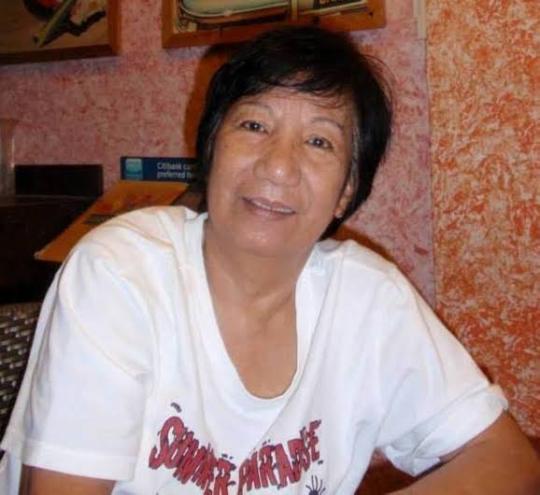
PhotoCredit:https://www.manilatimes.net/2023/02/16/opinion/columns/lualhati-bautista-from-writer-to-legend/1878907/amp
Lualhati Bautista, born in 1945, is a novelist and screenwriter who regularly dives into topics of poverty, social inequity, and women's concerns in her writing. Among her most well-known literary pieces are "Dekada '70", "Bata, Bata, Pa'no Ka Ginawa?", and "Desaparesidos". Although Bautista's writing is straightforward and uncomplicated, it still conveys important messages about society and politics. Numerous honors, including the National Book Award and the Carlos Palanca Memorial Award for Literature, have been bestowed upon her.
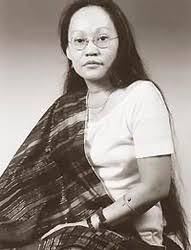
PhotoCredit:https://www.goodreads.com/author/show/225773.Ninotchka_Rosca
Filipino-American poet and activist Ninotchka Rosca was born in the Philippines on January 2, 1946. She started participating in activism during Ferdinand Marcos' regime in the Philippines in the 1970s and 1980s. Co-founding the Philippine-American Solidarity Committee (PASC) in New York City and utilizing her writing as a journalist to expose the injustices and human rights violations that were occurring under Marcos' tyranny were only two of the important contributions Rosca made to the battle for democracy and human rights. Rosca has won many honors and recognitions during her career for her activism and literary accomplishments. She continues to play a significant role in Philippine activism and serves as an example for many others who want to fight for social justice and human rights. As of now
1 note
·
View note
Text
Period of Activism
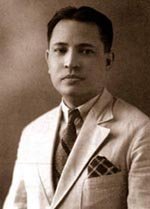
PhotoCredit:https://www.goodreads.com/author/show/796596.Amado_V_Hernandez
Amado V. Hernandez, a renowned Filipino writer, poet, and activist, was born on September 13, 1903, in Tondo, Manila. He utilized his writing as a means of expressing his social and political beliefs, and his literary works, including the epic poem "Isang Dipang Langit" and the novel "Mga Ibong Mandaragit," are considered masterpieces in Philippine literature. Hernandez was also actively involved in labor organizing, for which he was imprisoned. Unfortunately, he passed away on March 24, 1970, while still incarcerated in New Bilibid Prison.
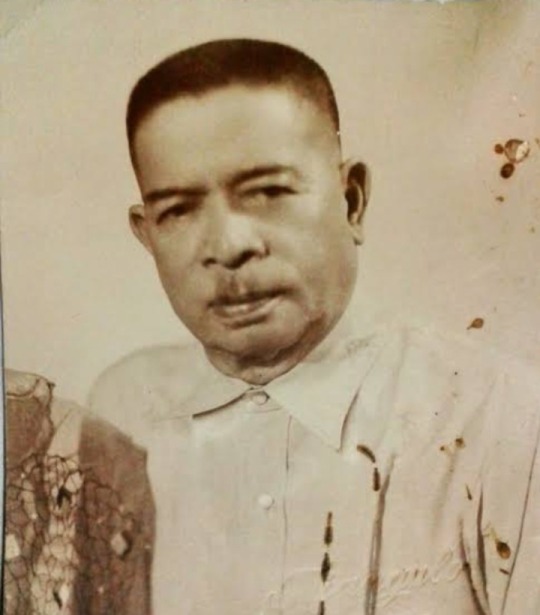
PhotoCredit:http://archive.upslis.info/lopeksantos/fatherfilipinogrammar.html
Lope K. Santos, on the other hand, was a Filipino writer, lawyer, and labor activist who was born on September 25, 1879, in Pasig, Rizal. He is best remembered for his 1906 novel "Banaag at Sikat," which chronicles the struggles of Filipino peasants against Spanish colonialism and the oppression of wealthy landowners. Santos was one of the founding members of both the Philippine Writers' League and the Philippine Association of Lawyers. He died on May 1, 1963, in San Miguel, Manila.
2 notes
·
View notes
Text
Period of Philippine literature in English

Photo Credit: https://en.wikipedia.org/wiki/F._Sionil_Jos%C3%A9
F. Sionil Jose (1924-2022) - Born in Rosales, Pangasinan, F. Sionil Jose was a novelist, essayist, and journalist who was known for his socially and politically engaged works. He wrote extensively about the struggles of the working class and the injustices of Philippine society. Some of his most famous works include the five-part "Rosales Saga" and the novel "Viajero." Jose was also a recipient of numerous literary awards, including the Ramon Magsaysay Award for Journalism, Literature, and Creative Communication Arts.

Photo Credit:https://content.lib.washington.edu/exhibits/bulosan/index.html
Carlos Bulosan (1913-1956) - Born in Binalonan, Pangasinan, Carlos Bulosan was a novelist, poet, and labor activist who migrated to the United States in the 1930s. His works often explored the experiences of Filipino migrants and their struggles with racism and discrimination. Some of his most famous works include the semi-autobiographical novel "America Is in the Heart" and the collection of poetry "The Voice of Bataan." Bulosan was also a prominent figure in the American labor movement and an advocate for the rights of Filipino migrant workers.
1 note
·
View note
Text
Period of Japanese

Photo Credit:https://en.m.wikipedia.org/wiki/Nick_Joaquin
Nick Joaquin (1917-2004) - Joaquin was a prolific writer who produced novels, short stories, plays, and essays. During the Japanese Occupation, he wrote for the underground resistance movement and published works under various pseudonyms. One of his most famous works, the novel "The Woman Who Had Two Navels" (1961), was set during the Japanese Occupation and explored themes of identity and nationalism.
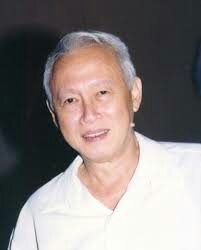
Photo Credit: https://26suriagaroyjohn.wordpress.com/2017/11/26/francisco-arcellano/
Francisco Arcellana (1916-2002) - Arcellana was a writer known for his elegant prose and mastery of the short story form. During the Japanese Occupation, he worked as a translator and editor for the Japanese-controlled newspaper The Tribune. Despite this, he managed to write and publish short stories that reflected the harsh realities of the time. His collection "The Mats" (1947) is considered a classic of Philippine literature.
1 note
·
View note
Text
Period of American Regime
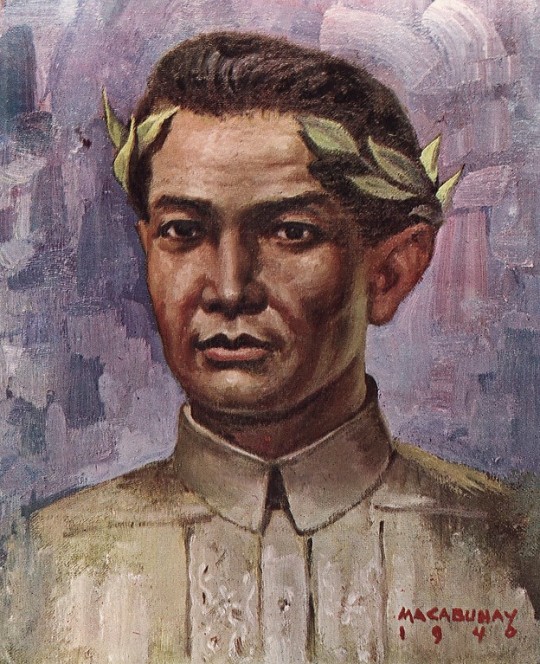
Photo Credit: https://bayaningfilipino.blogspot.com/2017/08/talambuhay-ni-francisco-balagtas.html?m=1
Francisco Balagtas (1788-1862) - Although Balagtas lived before the American period, his works were widely read and revered during this time. He is considered one of the greatest Filipino writers of all time and his epic poem "Florante at Laura" is still taught in schools today. Balagtas was known for his mastery of Tagalog poetry and his use of traditional Filipino poetic forms.
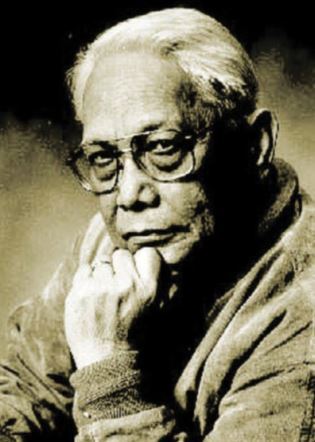
PhotoCredit:https://english.colostate.edu/news/filipino-american-history-month-n-v-m-gonzalez/
N.V.M. Gonzalez (1915-1999) - Gonzalez was a novelist, short story writer, essayist, and teacher. He was known for his realistic depictions of Philippine life and his exploration of themes such as colonialism, identity, and social justice. Gonzalez's most famous works include the novel "The Bamboo Dancers" and the short story collection "Children of the Ash-Covered Loam."
3 notes
·
View notes
Text
Period of Enlightenment
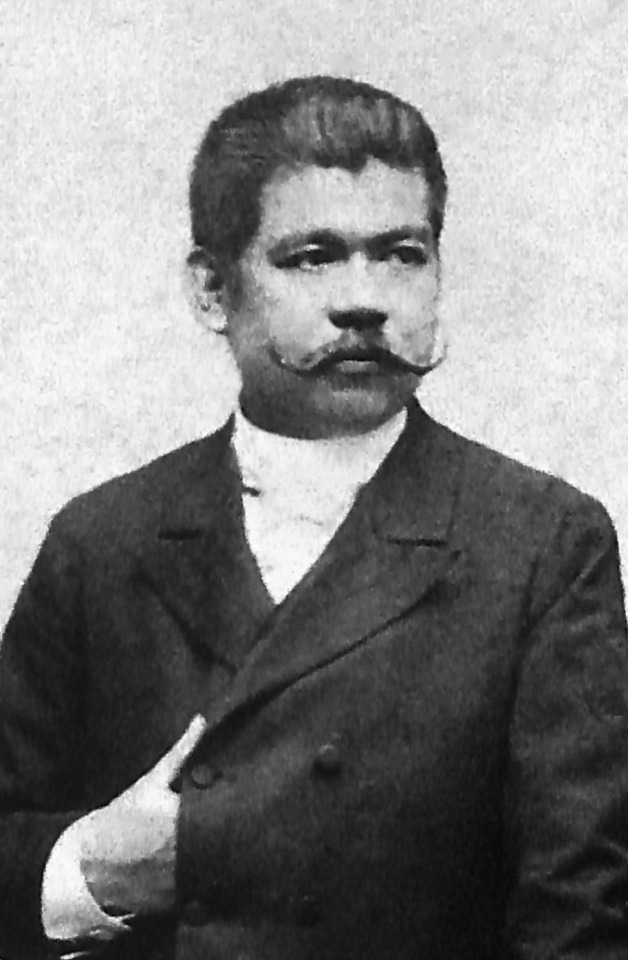
Photo Credit:https://en.m.wikipedia.org/wiki/Marcelo_H._del_Pilar
Marcelo H. del Pilar (1850-1896)- He was a journalist and writer who used his platform to expose the abuses of the Spanish colonial government. He was the editor of the La Solidaridad newspaper and wrote various articles criticizing the friars and the colonial authorities. His writings contributed to the awakening of the Filipino national consciousness and helped shape the country's nationalist movements.

Photo Credit: https://www.findagrave.com/memorial/171579162/antonio-ma-regidor
Antonio Ma. Regidor ( 1863-1936- He was a lawyer and writer who was known for his works on Philippine history and politics. He wrote several books, including "Historia de Filipinas para los Cuatro Anos," which is considered to be one of the first history textbooks in the Philippines. Regidor's writings helped Filipinos understand their own history and identity, and contributed to the development of a sense of national pride.
1 note
·
View note
Text
Period of Pre-Spanish
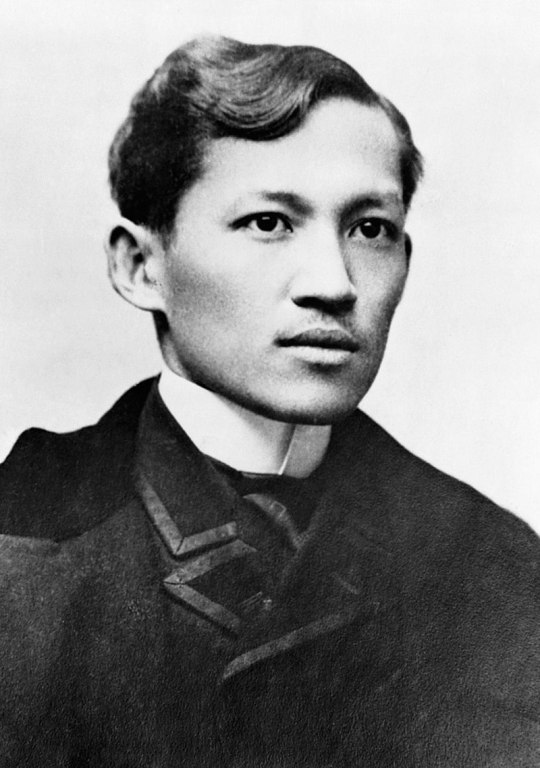
Photo Credit: https://en.m.wikipedia.org/wiki/Jos%C3%A9_Rizal
Jose Rizal (1861-1896) is regarded as the national hero of the Philippines and is a prominent figure in Philippine history due to his significant literary contributions. His renowned novels, "Noli Me Tangere" and "El Filibusterismo", uncovered the oppressive actions of the Spanish colonial administration in the Philippines, ultimately serving as inspiration for the Philippine Revolution. His writing continues to inspire Filipinos to this day.
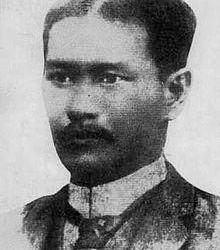
Photo Credit: https://en.m.wikipedia.org/wiki/Graciano_L%C3%B3pez_Jaena
Graciano Lopez Jaena(1856-1896), who was a journalist, novelist, and playwright. He was known for his critical writing, which exposed the injustices and abuses of the Spanish colonial government. His most famous work is the play "Kahapon, Ngayon, at Bukas," which is considered a classic of Philippine literature. Lopez Jaena's work helped inspire a generation of writers who would continue to challenge the status quo and fight for the rights of the Filipino people.
3 notes
·
View notes
Text

Photo Credit: https://www.rappler.com/newsbreak/iq/people-power-philippines-world-bright-spot-1986/
"The Emergence of Contemporary Writers in Post-EDSA Revolution Philippines".
The period after the EDSA revolution in the Philippines saw the emergence of a fresh cohort of writers who addressed contemporary concerns and challenges. These writers tackled themes such as democracy, social justice, human rights, and national identity. Some of the prominent writers from this era were Jose Dalisay Jr., Ninotchka Rosca, Jose F. Lacaba, Bienvenido Lumbera, and Lualhati Bautista. Through their works, they conveyed the experiences of Filipinos during the post-EDSA era and their writings offer valuable perspectives on the intricate issues that continue to influence Philippine society at present.
Reference: https://www-manilatimes-net.cdn.ampproject.org/v/s/www.manilatimes.net/2023/02/25/opinion/columns/edsa-1-a-revolution/1880137/amp?amp_gsa=1&_js_v=a9&usqp=mq331AQIUAKwASCAAgM%3D#amp_tf=From%20%251%24s&aoh=16830937649940&referrer=https%3A%2F%2Fwww.google.com&share=https%3A%2F%2Fwww.manilatimes.net%2F2023%2F02%2F25%2Fopinion%2Fcolumns%2Fedsa-1-a-revolution%2F1880137
2 notes
·
View notes
Text

Photo Credit: https://martiallawmuseum.ph/magaral/promises-of-the-new-society/
The "New Society" was a term coined during the rule of former Philippine President Ferdinand Marcos, which aimed to transform the country into a society free from poverty, corruption, and political turmoil. Although Marcos promised to implement policies such as land reform and infrastructure development, his authoritarian rule and human rights abuses stained the vision of a New Society. Today, the Philippines still faces challenges such as poverty, inequality, and corruption. However, the path towards a truly new society must prioritize democratic participation, social justice, and respect for human rights. Achieving this requires genuine political will and accountability from those in power.
Reference: https://martiallawmuseum.ph/magaral/promises-of-the-new-society/
1 note
·
View note
Text

Photo Credit: https://group4lit1webpage.wordpress.com/period-of-activism-and-the-new-society/
PHILIPPINE LITERATURE IN ACTIVISM PERIOD
Amidst the struggles of the land,
A voice arose, to take a stand,
Through ink and paper, words take flight,
Philippine literature, during activism's fight.
Poetry, a powerful tool,
Inspiring hope, for the oppressed to rule,
Revolution in the written word,
Philippine literature, freedom incurred.
Novels, plays, and essays too,
Challenging the status quo anew,
Provoking thoughts, and stirring hearts,
Philippine literature, playing its part.
Activism's period, a time of change,
Injustice challenged, rights reclaimed,
Philippine literature, a weapon wielded,
Against oppression, a light that's shielded.
Today, we honor those who wrote,
Their words immortal, and forever afloat,
Philippine literature, a legacy that stands,
For the struggles of the past, and future's demands.
2 notes
·
View notes
Text

Photo Credit: https://unsplash.com/photos/Sj0iMtq_Z4w
TRUE FRIENDS
True friends, like family close
Their presence is what you need
In happiness or distress
Their care and kindness, will last.
1 note
·
View note
Text

Photo Credit: https://www.theodysseyonline.com
UNATTAINABLE LOVE
When I saw you, I saw love,
My heart beat so strong and true
But I am fully aware,
That you belong to someone.
2 notes
·
View notes
Text

Photo credit: https://www.istockphoto.com/illustrations/corner-depression
BEATING THE BLUES
Heavy heart, burdened soul,
Emptiness that takes its toll,
Darkness prevails, takes control,
Hopelessness, the only goal.
1 note
·
View note
Text

Photo Credit: https://www.freepik.com/premium-vector/long-distance-relationships-romantic-relationship-concept-difference-time_20977218.htm
LOVE'S DISTANCE DEFIED
Miles apart, our love still remains
Heartbeats in sync, like flowing streams
Through the pain, our love sustains
Together we wait, for us.
1 note
·
View note
Text

Photo Credit: https://www.wikihow.com/Bring-Back-Love-in-a-Long-Distance-Relationship
HEART IN SYNC TROUGH DISTANCE
Distance may separate us in miles
But love unites us with smiles
Through the screen, our love compiles
Our hearts in sync, always.
1 note
·
View note